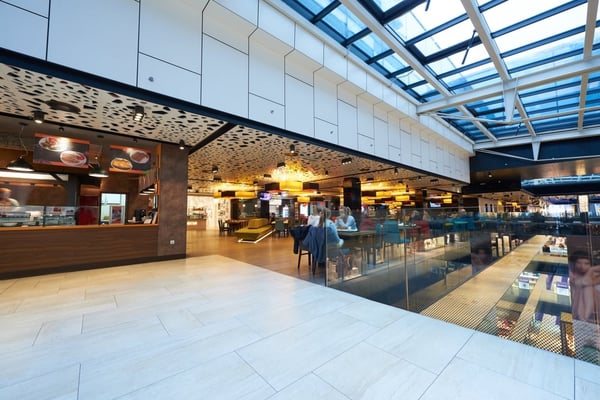You’ve seen them. Today, most brick and mortar retailers rely on security cameras in stores to protect them from theft and other crimes. However, what you may not realize is that with all the advancements made in artificial intelligence (AI), these cameras can be used for more than security. It can also teach you a lot about your customers and business, and help you refine the experiences of customers in the process.
Here are 3 ways integrating AI into standard surveillance hardware can help businesses improve customer service:
1. Identify and categorize visitors
We’ve talked before about how AI can help online retailers give their customers more personalized customer experiences, but brick and mortar stores aren’t left out. Using computer vision, particularly facial recognition, businesses can now leverage their security cameras and learn exactly who is visiting their locations.
While humans can remember thousands of faces, the best facial recognition can remember thousands more. One fast food restaurant leverages this capability, so where a customer links their face to their loyalty account, the restaurant’s cashier kiosks can quickly identify that customer and make order suggestions based on their order history.
 Across the world, certain retailers and shopping malls are already using the technology to quickly identify when VIP customers enter their stores. Employees can then be immediately notified, so they can tailor their approach by, for e.g., offering relevant promotions based on the customer’s status or preferences.
Across the world, certain retailers and shopping malls are already using the technology to quickly identify when VIP customers enter their stores. Employees can then be immediately notified, so they can tailor their approach by, for e.g., offering relevant promotions based on the customer’s status or preferences.
2. Analyze traffic and store layout to increase conversion rates
As stated here, there is much AI can teach, from monitoring the flow of people and level of foot traffic areas in public spaces. Department stores, like Macy’s, have already incorporated AI into their stores, building “smart environments” that use their in-store cameras to analyze traffic patterns and dwell time.
Since changing the physical layout of a retailer is no simple task, it’s imperative for businesses to ensure this is worth their while. AI allows for this, with even the smallest changes in a store’s layout, like a grocery store putting more expensive products in prominent places or changing the wording of its in-store promotions, being quickly and effectively analyzed by the technology.

Counting the number of new visitors to a store can also offer businesses valuable insights. LBX, China’s largest pharmacy chain, utilizes AI-powered sensors in the entrances of their newly opened stores to see if these locations are attracting new customers. With that information, they can analyze their promotional tactics and determine whether they are adequate or if it needs to be improved.
3. Help your employees help your customers
While training employees is critical to ensuring they meet customer service standards, no amount of training can overcome the fact that employees simply can’t keep an eye on every single customer at any given time.
With facial recognition, retailers can now augment these employees by using cameras to analyze the facial expressions of customers and gain key emotional insights. Wal-Mart recently patented a technology that will enable their security cameras to monitor customers as they wait in the checkout lines, observing their facial expressions and using this to measure the levels of satisfaction. AI could also tell them when any disgruntlement started, by tracking the customer’s pathway through the store.
Businesses can even benefit in real-time. One bookstore in France used AI to monitor its live video feeds and analyze the facial expressions of its customers as they went through the store. With the software, cameras could detect, for instance, hesitation or frustration and notify the store's employees, allowing them to step in to help the customer or rectify the pain point immediately, improving the customer’s experience then and there.
While sensors and cameras remain valuable safety and security tools for brick and mortar businesses, when combined with technologies as impactful as computer vision and facial recognition, these standard devices can become key analytical tools that help retailers to improve in the most pivotal part of their operations: customer service.



